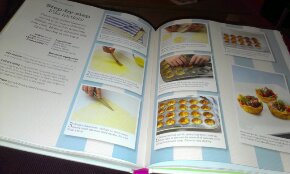This book took me a long time to get through — not because I didn’t like it or wasn’t interested in the topic, but because it kept making me so angry I’d have to look up from it and seethe silently to myself, or else risk throwing it across the room.
As an atheist and a feminist, I picked this book up precisely because I knew it would piss me off. (I can’t be the only person who sometimes reads things masochistically?) I didn’t realize I’d end up actually feeling sorry for some of these poor brainwashed women in the so-called Quiverfull movement, on top of being upset at the men (and other women!) who kept them subjugated.
The idea behind Quiverfull is that families (ahem, women) are meant to raise a “quiver full of arrows” to fight a holy war against all non-fundamentalist Christians, i.e. to squeeze out as many babies as humanly (bovinely?) possible — see, for example, the infamous Duggars — to prepare for some sort of white jihad. The other main idea is that men are the head of anything and everything that could ever possibly exist or happen… for example:
- women can’t speak in church,
- women can’t hold jobs outside the home,
- women can’t question anything their husband does (or anything any man does, really),
- women must homeschool their broods (but not once their sons get too old, because no way can any female have authority over a male, even if it’s her own damn child),
- figure out what your problem is if your husband is abusing you, because since he’s the embodiment of Jesus on earth he can’t possibly be doing anything wrong and you must be doing something to goad him into it (like not bringing him his slippers),
- join ranks with the other church ladies to shame any woman whose husband is abusing her, because she’s obviously not churchy enough to be good enough for him, even if he’s clearly an arsehole,
- women should get permission from their husbands before deciding what to wear, if they should wear makeup, what chores they’ll do today, what books they’re allowed to read,…
This is a good book (assuming you don’t need to get someone else’s permission first — barf) if you need some kind of mental image before your kickboxing class, or if you want to see exactly how you should NOT run a marriage and a family.


